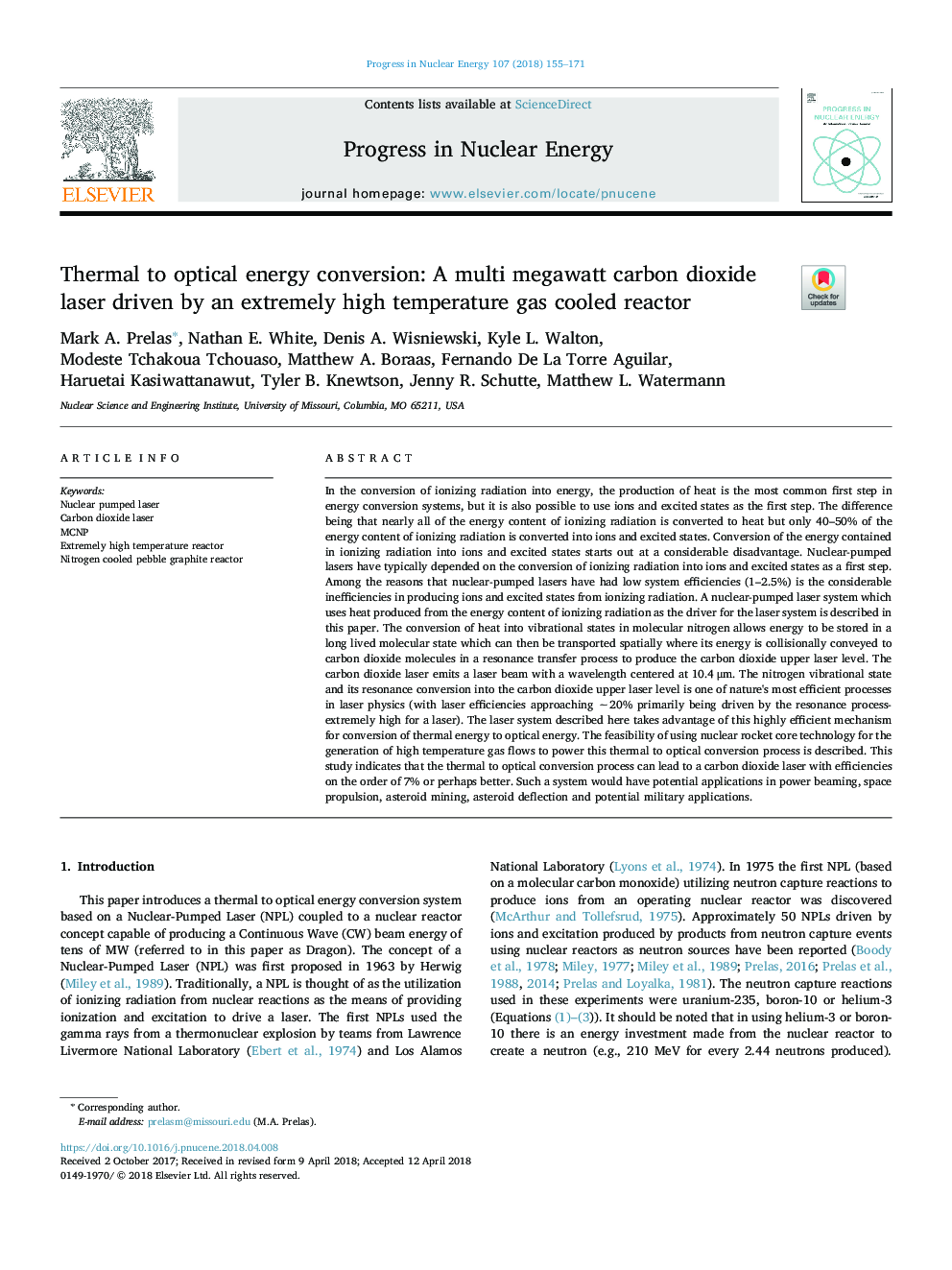| Article ID | Journal | Published Year | Pages | File Type |
|---|---|---|---|---|
| 8084227 | Progress in Nuclear Energy | 2018 | 17 Pages |
Abstract
In the conversion of ionizing radiation into energy, the production of heat is the most common first step in energy conversion systems, but it is also possible to use ions and excited states as the first step. The difference being that nearly all of the energy content of ionizing radiation is converted to heat but only 40-50% of the energy content of ionizing radiation is converted into ions and excited states. Conversion of the energy contained in ionizing radiation into ions and excited states starts out at a considerable disadvantage. Nuclear-pumped lasers have typically depended on the conversion of ionizing radiation into ions and excited states as a first step. Among the reasons that nuclear-pumped lasers have had low system efficiencies (1-2.5%) is the considerable inefficiencies in producing ions and excited states from ionizing radiation. A nuclear-pumped laser system which uses heat produced from the energy content of ionizing radiation as the driver for the laser system is described in this paper. The conversion of heat into vibrational states in molecular nitrogen allows energy to be stored in a long lived molecular state which can then be transported spatially where its energy is collisionally conveyed to carbon dioxide molecules in a resonance transfer process to produce the carbon dioxide upper laser level. The carbon dioxide laser emits a laser beam with a wavelength centered at 10.4â¯Î¼m. The nitrogen vibrational state and its resonance conversion into the carbon dioxide upper laser level is one of nature's most efficient processes in laser physics (with laser efficiencies approaching â¼20% primarily being driven by the resonance process-extremely high for a laser). The laser system described here takes advantage of this highly efficient mechanism for conversion of thermal energy to optical energy. The feasibility of using nuclear rocket core technology for the generation of high temperature gas flows to power this thermal to optical conversion process is described. This study indicates that the thermal to optical conversion process can lead to a carbon dioxide laser with efficiencies on the order of 7% or perhaps better. Such a system would have potential applications in power beaming, space propulsion, asteroid mining, asteroid deflection and potential military applications.
Keywords
Related Topics
Physical Sciences and Engineering
Energy
Energy Engineering and Power Technology
Authors
Mark A. Prelas, Nathan E. White, Denis A. Wisniewski, Kyle L. Walton, Modeste Tchakoua Tchouaso, Matthew A. Boraas, Fernando De La Torre Aguilar, Haruetai Kasiwattanawut, Tyler B. Knewtson, Jenny R. Schutte, Matthew L. Watermann,
